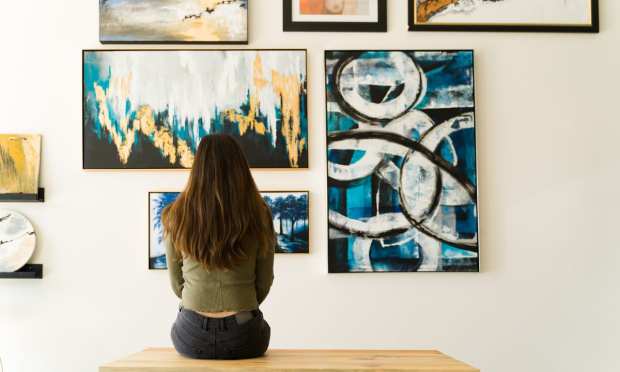Art Collecting Goes Digital As New Generation Comes Of Age

Like virtually every market in 2020, art collecting saw a digital expansion last year, a seismic shift for consumers and artists accustomed to stuffy galleries, auctions and in-person experience that could upend decades-old ways of doing business.
In 2019, online sales accounted for just 9 percent of the entire art market; a year later, they had more than doubled, making up 25 percent of the market. And even as the overall art market contracted by 22 percent in 2020, the online portion of sales grew by 107 percent.
This trend, while certainly accelerated by the pandemic, is something the art market had already been moving toward, according to online art brokerage firm Artsy, which released its Art Collecting 2021 report on Wednesday (June 30). Over 83 percent of art buyers surveyed by Artsy said they have purchased art online at least once — a jump from the 64 percent who had done so in 2019.
Dustyn Kim, chief revenue officer at Artsy, said the reticence of the art market to move online “speaks to the traditions of the art world in general, and, frankly, Artsy’s mission to expand the art market.”
In terms of eCommerce, Kim said, “the art market has been a bit late to the game. But over the course of really the last several years, and in particular, the last 18 months or so has really driven and accelerated the move of our industry online.”
Barriers Of Tradition
Despite this acceleration, Artsy’s report noted that “long-held habits in the art industry,” including the lack of visible pricing, could restrain the market’s expansion. Information imbalances were standard practice in the art industry for the last few decades, keeping the market confined to elite groups and putting a ceiling on its growth.
“What we hear from many, particularly newer, collectors is that the art world is intimidating. … It can be quite intimidating to speak up and ask for more information,” Kim said. “It has not generally been a very welcoming industry.”
Over 60 percent of art buyers said the lack of visible pricing was one of the most important factors preventing them from buying art online, and Artsy has found that works listed with visible prices are five times more likely to be purchased than those without.
Kim said 93 percent of the world’s millionaires do not report collecting art, “a huge amount of wealth that is sitting on the sidelines.”
Instead, these individuals spend thousands of dollars on other luxury items, such as homes, cars and jewelry
Therefore, Artsy said, “the most important action sellers can do to attract new collectors is making the price of art transparent.”
The Next Generation
Although collecting art may have a stodgy reputation, about one-fifth of the buyers surveyed by Artsy started collecting in the last four years — and 65 percent of those were between 18 and 44 years old.
Unlike previous generations of art collectors, Artsy found that newer collectors “have different needs, priorities and preferences from those who’ve been in the market for many years” — a lesson that sellers across all retail markets have been grappling with. According to a report released earlier this year by UBS and Art Basel, millennials spent a median of $228,000 on art in 2020, about $100,000 more than their Generation X peers and more than double what baby boomers spent.
As PYMNTS’ Connected Economy research has shown, digital tool use has become ubiquitous, with 92 percent of all consumers — not just millennials — placing online orders for products and services. And in the art world, it’s no different: 91 percent of art buyers who started collecting in the last four years buy art online and they’re more likely to conduct their own research online than respondents who have been collecting longer.
Additionally, 64 percent of next-generation art collectors prefer to use their mobile phones to conduct the bulk of their art-buying activities rather than a desktop computer.
Kim said, though, that Artsy and other online artwork marketplaces are likely to complement rather than replace the physical art world.
“We’re just seeing a convergence of both online discovery and in-person viewings and networking,” Kim said. “And those two things can coexist. Buyers increasingly, across so many of these industries, expect to be able to have both an online and offline component to their purchase.”